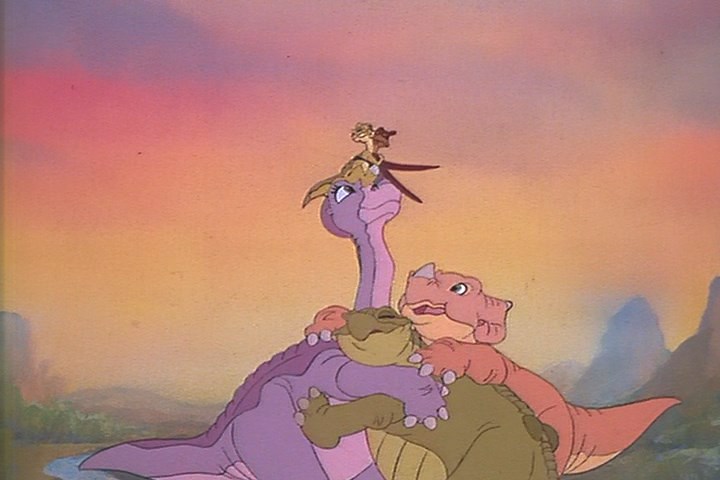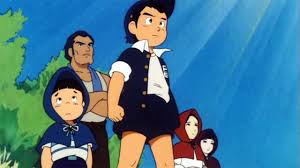PG, 81m, 1985
With the Voices Talents of Grant Beardsley (Taran), Susan Sheridan (Princess Eilonwy), Nigel Hawthorne (Fflewddur Flam), John Byner (Gurgi and Doli), John Hurt (The Horned King), Phil Fondacaro (Creeper), Freddie Jones (Dallben), Eda Reiss Merin (Orduu), Adele Malis-Morey (Orwen), Billie Hayes (Orgoch), Arthur Malet (King Eidilleg) and John Huston (Narrator). Directed by Ted Berman and Richard Rich. Produced by Joe Hale and Ron Miller. Screenplay by Ted Berman, Vance Gerry, Joe Hale, David Jones, Roy Morita, Richard Rich, Art Stevens, AL Wilson and Peter Young. Music by Elmer Bernstein. Based on The Book of Three and The Black Cauldron by Lloyd Alexander.

The Black Cauldron is often labelled as the black sheep of the Disney Studio. This is understandable when you factor in how dark and drastically different this film is in terms of tone to other Disney movies. Now this doesn’t mean that Disney is known for only doing lighthearted fluff. The “Night on Bald Mountain” segment from Fantasia, the death of Bambi’s mother and the jackass transformation scene in Pinocchio are some of the darkest scenes and concepts in western animation. However, this film took it several steps too far while simultaneously having a massive tone problem. This film is also labeled as the black sheep of the Disney Studio due to its infamously poor reception both at the box office and critically. This film did so bad at the box office that it was beat out by The Care Bears Movie, which had a much smaller budget. This film did so bad at the box office it almost bankrupt the Disney Feature Animation studio. The film would not be released on home video until 1998, which by that point many Disney films had already been released multiple times on home video.
The film is based on the first two books in Lloyd Alexander’s series The Chronicles of Prydain (The Book of Three and The Black Cauldron). The film opens with exposition narrated by John Huston about the Black Cauldron and how by using it one can create a race of deathless warriors. We are then introduced to Dallben (Freddie Jones) and his ward, Taran (Grant Beardsley). They are the caretakers of the magical pig, Hen Wen. Hen Wen has the power to produce visions by dipping her snout in water. When Dallben learns that the Horned King (John Hurt) is searching for Hen Wen in order to find the Black Cauldron. Dallben then orders Taran to hide in a cottage in the forest, until Dallben believes its safe. Naturally, Taran gets distracted daydreaming about being a warrior and loses Hen Wen. While looking for Hen Wen Taran runs into Gurgi (John Byner) who only wants “munchings and crunchings”. Taran finds Hen Wen just as she’s being captured by the Horned King’s Gwythaints (basically a dragon, only they never breathe fire). They bring Hen Wen to the Horned King, where Taran manages to free Hen Wen at the cost of his own freedom. Inside the Horned King’s dungeons, we meet the talkative Princess Eilonwy (Susan Sheridan) and the minstrel Fflewddur Flam (Nigel Hawthorne). Taran finds a magical sword that can seemingly cut through anything and uses it to escape the Horned King’s castle along with Eilonwy and Fflewddur. Now the group must find the Black Cauldron before the Horned King and destroy it or all of Prydain is ruined.
In a fantasy adventure driven story, the story lives or dies by its characters. This is effectively the biggest flaw with the movie. In the books all the characters get properly flushed out. The characters in this film do not get the same treatment. In the book, Princess Eilonwy is a princess for a reason and her being a princess matters to the story. She also has a personality and contributes to the plot. In this film, Eilonwy is a princess for seemingly no reason. We never visit her castle, we learn nothing of her life prior to the events of the film and she doesn’t even do the stereotypical Disney tropes that is commonly found in Disney films (she has no animal sidekick, she never sings, she never looks into a pool of water singing about what she wants in life etc.). The only reason I can think of for her possibly being a princess is a marketing ploy by Disney. Evidentially this backfired because she is the only Disney princess to be in a full-length animated film and not get marketed as a Disney Princess (Kida from Atlantis: The Lost Empire doesn’t count because she becomes queen at the end). The character of Fflewddur Flam is essentially pointless serving, only as a comic relief. Which is real shame because in the book, he was one of the most interesting characters and his magic harp actually came into play. The characters of Gurgi, Creeper and Doli serve some use to the plot, but they come across as annoying and uninteresting. However, by far the worst character in this film is Taran, who serves as the stereotypical “I want to be a somebody” character. Taran is easily one of the worst characters in the movie. He spends most of his time acting like an arrogant brat who whines constantly. As is the case with many Disney films, the best character in the film is the villain. The Horned King is easily one of Disney’s most sinister and creepy villains ever brought to screen. John Hurt does an excellent job voicing the Horned King. His creepy vocals give the character an even more sinister edge.
This film may not be suitable for some young children. Many children will find scenes involving the Horned King to be too scary. During the final battle scene, we see hundreds of skeletons come to life in an eerily puppet like manner. This scene alone will give some young viewers nightmares. I grew up in a strict household when it comes to media (in other words I was the kid whose parents wouldn’t let him watch The Simpsons or Family Guy) and I was not allowed to watch this film until after I turned ten. This film is the first Disney animated film to receive a PG rating and this PG is well earned. Granted the film could have been a lot darker, but Disney made some cuts to the final picture, and it is rather noticeable. In the scene when the Cauldron Born first come to life and attack the Horned King’s henchman, there’s a very noticeable edit where the score suddenly cuts off and one can quickly tell something was edited out.
The only reason I can think of for recommending this film is to see Disney attempt to make a much darker film. Fans of The Chronicles of Prydain will hate this film because it was translated to film about as well as Eragon or Percy Jackson was. The only slightly redeeming thing this film is the animation as well as the Horned King, and even he is rather dull and lifeless (no pun intended). Disney has gotten into a bad habit recently of remaking some of their classics into live action films. In my opinion, they should stop remaking their good animated films into live action films and instead remake their bad or mediocre animated films into live action. I would love to see this film done right in live action. The film would have to be at least PG-13 to do it justice. The only saving grace this film has is it finally gave the Disney Animation Studio the kick in the pants it needed to better themselves.









